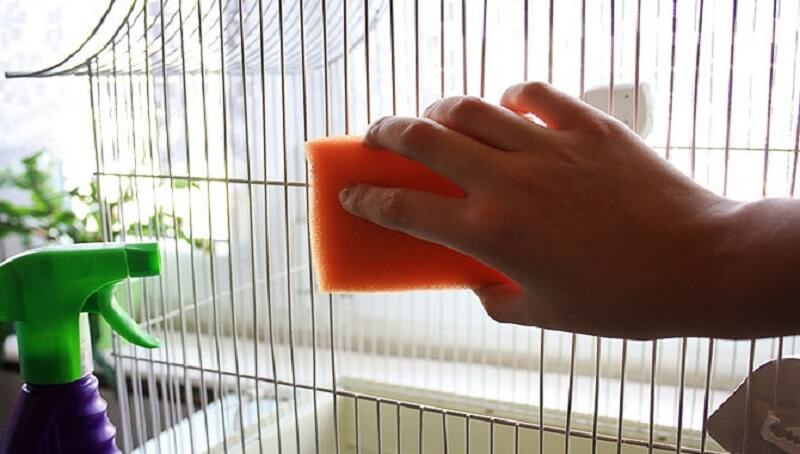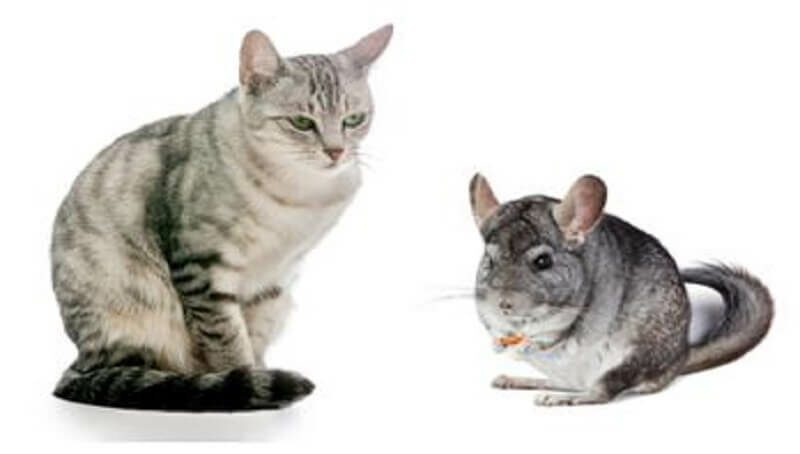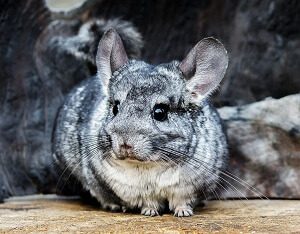
How Long do Dachshunds Live?
November 28, 2022
Can You Use Bleach to Clean Animal Cages?
November 28, 2022
If you have a cat and you want to purchase a chinchilla as a pet, I recommend that you think well and hard before disturbing the balance in the house. A chinchilla is a rodent, while cats are natural predators of most rodents.
That said, that doesn’t mean your cat will return to its wild state. As with any other pet, even of the same species, determining the compatibility between two pets depends on the particular personality of the two pets. Two animals of any species, if raised together, can grow or adapt to life together.
First of all, if you decide to buy a chinchilla, analyze your cat’s behavior well. If the cat is friendly, lazy, and calm, it will probably live well with a chinchilla. If, on the contrary, the cat is aggressive, territorial, and with a spirit of “hunting”, then the results of buying a chinchilla might not be as great as you’d expect.
But it is important to have an emergency plan if the fights don’t stop and your experiment of cohabitation fails.
What is a chinchilla?
Chinchillas comes from the mountainous regions of northern Chile, where they live in large groups of up to 100 individuals. Social creatures, they crave companionship, but usually of their own species. Another problem that affects compatibility is that they are nocturnal creatures, so they need a calm environment during the day.
Evaluating both personalities
A cat and a chinchilla can live peacefully in the same house under certain circumstances. If you already have a cat, you need to carefully consider the personality of the cat. Many people have cats and chinchillas, but those owners will tell you that the relationship works best with gentle cats who don’t care too much about the chinchilla’s presence.
If your cat is more relaxed or gentle and doesn’t care much about hunting, then you have a much better chance of the feline ignoring the chinchilla. If the latter is ignored, it will probably get used to the presence of the cat and not be too stressed.
On the contrary, if your cat is an active hunter, then adding a chinchilla to the household may not work well. Even when the chinchilla is locked in the cage, a willfully-willed cat will be able to terrorize it by getting its paw through the cage bars, hitting it, or just watching the chinchilla with the eyes of a predator. After all, a chinchilla is a rodent and for a cat is normal to see it as prey at hand. The chinchilla can be very stressed in such conditions and it would be only torment for it to be your pet, so you better give up the idea.
That being said, it is recommended to carefully monitor when the cat is near the chinchilla cage, or any other rodent, at least at first, until the desires of the cat are established.
Careful observation
 The first few days are very hard. You should watch the cat when it’s close to the chinchilla’s cage for the first few days until you are sure that the cat has no interest in the chinchilla.
The first few days are very hard. You should watch the cat when it’s close to the chinchilla’s cage for the first few days until you are sure that the cat has no interest in the chinchilla.
When the chinchilla has free time to walk around the room, it is better for the cat to be taken to another room or stopped from reaching the rodent, at least at the beginning of the accommodation period. No matter how gentle and non-aggressive the cat may be, and no matter how long it has been since she was introduced to the chinchilla, it is not good to leave her unattended in the same open space with a chinchilla outside the cage.
Of course, if you have space and time, you can make a hunting cat and a docile chinchilla live together by always keeping the chinchilla and cat separate. Obviously, this requires much more care and juggling with the needs of the pets.
The are many chinchilla owners who tell a lot of stories about how their pets are friendly whether they are cats, parrots, or even with dogs. One such story talks about a house where a chinchilla, a cat, and a dog live together. The owners would walk the rodent, the dog, and the cat, every evening each of them eagerly waiting for this moment. Once all the animals were rendered in the same company, the frenetic race and games began throughout the whole apartment.
Some owners say that when the chinchillas are free around cats, they are not afraid of them, but they hang on them, on the neck, shoulder, and back, while the cats sit. From the outside, it looks very fun and relaxing.
